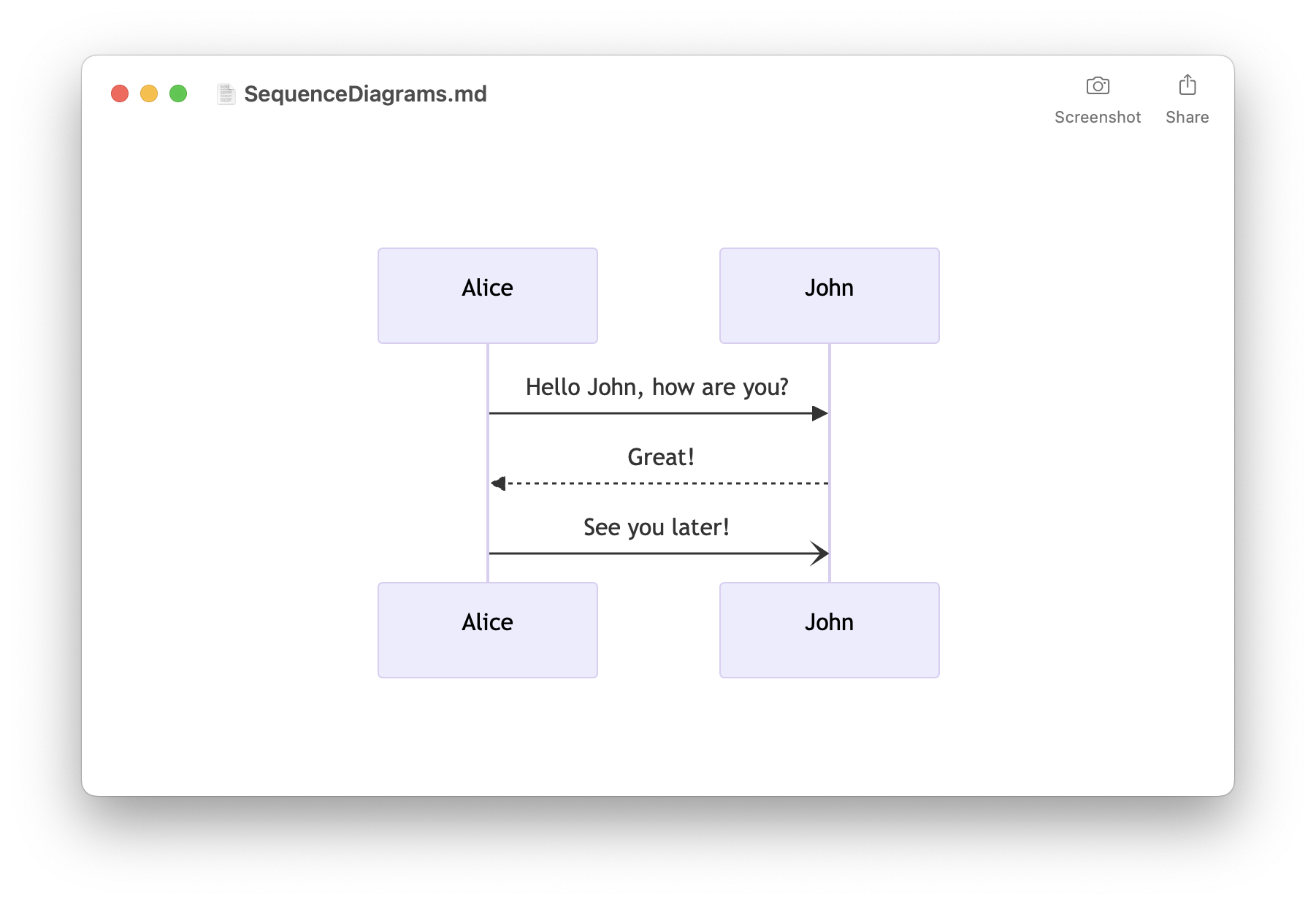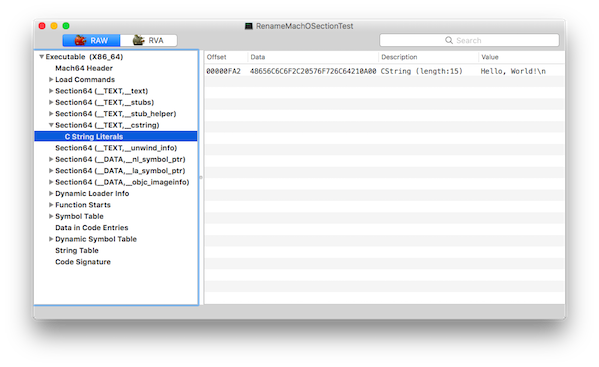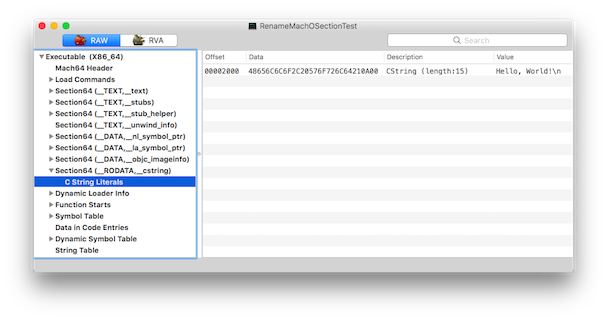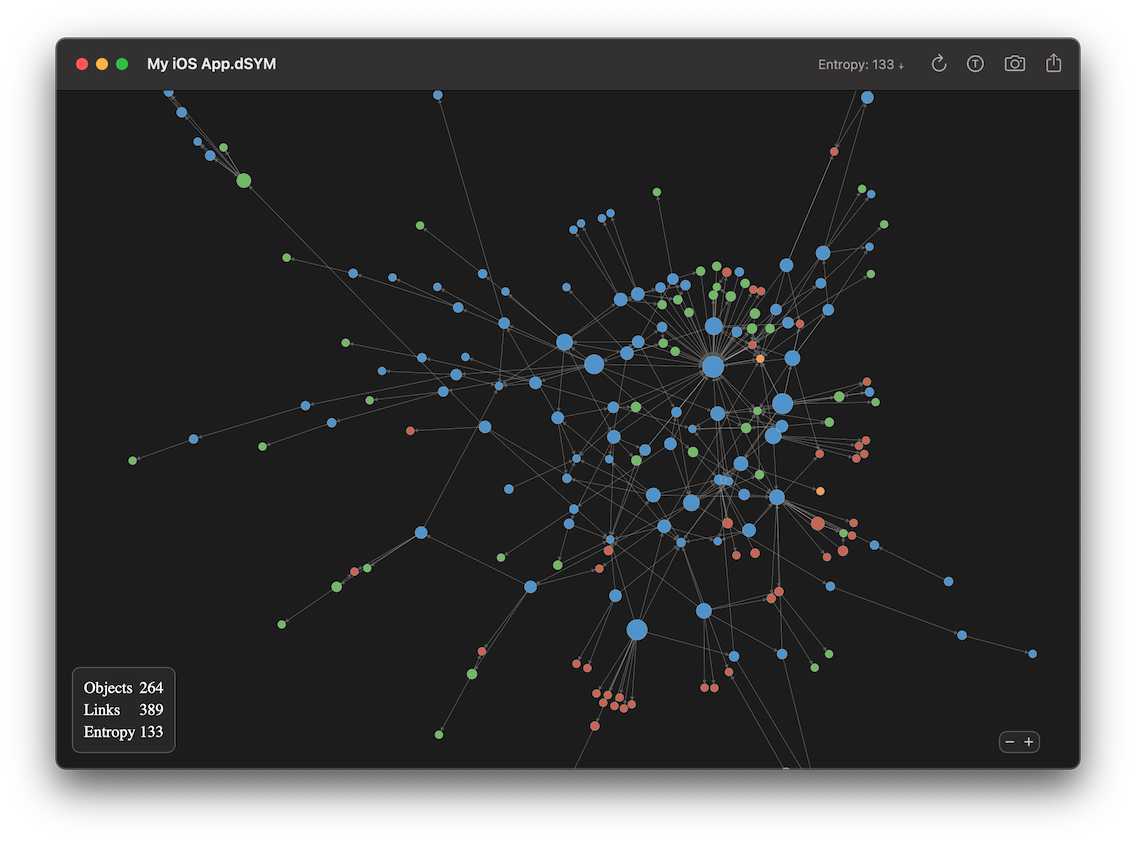Did you ever wonder why the Facebook.app for iOS is such a big download? This post tries to give some answers. The version 66.0 (released on 7 October 2016) was analyzed on an iPad Air 2 (64-bit).
- Easily preview Mermaid diagrams
- Live update when editing in your preferred editor
- Capture screenshots with customizable margins
- Create PNG from the Terminal
- Free download on the Mac App Store
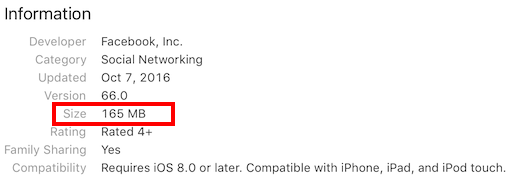
App content
A scan of the content of the Facebook app using GrandPerspective gives already a good overview:
As you can see more than 100 MB are taken by the binary itself. The images (Assets.car), the localizations and other resources are only responsible for a small part of the size.
One note: The Facebook app seems to use the open source JSC framework. Unless there is a technical reason to use it, Facebook could remove this framework and use instead the JavaScriptCore framework built in iOS. JavaScriptCore is available on iOS 7 and later and Facebook targets iOS 8 and later.
Slicing
One important point to note is that the Facebook binary I downloaded only contains 64-bit code. There is no 32-bit code. Facebook uses the Slicing mechanism which is described by Apple here:
Slicing is the process of creating and delivering variants of the app bundle for different target devices. A variant contains only the executable architecture and resources that are needed for the target device.
Entropy
Let’s look at the Facebook binary. The entropy graph generated by Hopper gives a good idea of the content:

The red part (with biggest entropy) is actual code while the green and orange parts are other sections (strings, constants, …). Just by looking at the entropy graph, we know that around 50% of the binary is code.
Sections
By looking at the sections of the binary we indeed see that the (__TEXT, __text) section is more than 50 MB. Here is the list of sections sorted by size:
(__TEXT, __text): 56.60 MB
(__DATA, __objc_const): 16.57 MB
(__RODATA, __cstring): 5.02 MB
(__RODATA, __objc_methname): 4.55 MB
(__DATA, __const): 4.46 MB
(__RODATA, __gcc_except_tab): 3.87 MB
(__RODATA, __objc_methtype): 2.66 MB
(__DATA, __objc_data): 2.41 MB
(__DATA, __cfstring): 2.20 MB
(__DATA, __data): 1.66 MB
(__TEXT, __unwind_info): 1.58 MB
(__RODATA, __objc_classname): 1.42 MB
(__RODATA, __const): 1.40 MB
(__DATA, __bss): 0.89 MB
(__DATA, __objc_selrefs): 0.80 MB
(__DATA, __common): 0.54 MB
(__DATA, __objc_ivar): 0.38 MB
(__DATA, __objc_classlist): 0.24 MB
(__DATA, __objc_classrefs): 0.18 MB
(__DATA, __objc_superrefs): 0.13 MB
(__TEXT, __const): 0.07 MB
(__DATA, __objc_protolist): 0.06 MB
(__TEXT, __stubs): 0.02 MB
(__TEXT, __stub_helper): 0.02 MB
(__DATA, __la_symbol_ptr): 0.01 MB
(__DATA, __got): 0.01 MB
(__TEXT, __ustring): 0.01 MB
(__DATA, fbsessiongks): 0.01 MB
(__TEXT, __eh_frame): 0.01 MB
(__DATA, __mod_init_func): 0.00 MB
(__DATA, __objc_protorefs): 0.00 MB
(__DATA, __objc_catlist): 0.00 MB
(__DATA, __objc_nlclslist): 0.00 MB
(__DATA, FBInjectable): 0.00 MB
(__DATA, __mod_term_func): 0.00 MB
(__DATA, __objc_imageinfo): 0.00 MB
__RODATA segment
If you read carefully the list of sections, you did notice that the Facebook.app has a __RODATA segment containing sections generally found inside the __TEXT segment. The reason for this oddity is to work around an App Review limitation. As you can read on the App Review page:
Each Mach-O executable file (for example,
app_name.app/app_name) must not exceed these limits:
- For apps whose MinimumOSVersion is less than 7.0: maximum of 80 MB for the total of all __TEXT sections in the binary.
- For apps whose MinimumOSVersion is 7.x through 8.x: maximum of 60 MB per slice for the __TEXT section of each architecture slice in the binary.
- For apps whose MinimumOSVersion is 9.0 or greater: maximum of 400 MB for the size of the Mach-O binary file.
Facebook targets iOS 8.0 and later and as such its __TEXT segment should not exceed 60 MB. But if you sum up the __TEXT and __RODATA segments, you end up with more than 77 MB:
Total size of the __TEXT sections: 58.3 MB
Total size of the __RODATA sections: 18.9 MB
Facebook avoids this limitation by moving some if the __TEXT sections into the read only __RODATA segment. Implementing this trick is really simple: you just need to add a linker flag to rename the chosen sections. And it appears you need absolutely nothing at runtime: the renamed sections will be found automatically. This linker flag is described in the ld man page:
-rename_section orgSegment orgSection newSegment newSection
Renames section orgSegment/orgSection to newSegment/newSection.
You could use it to rename the (__TEXT, __cstring) section to (__RODATA, __cstring) by simply adding this line into the Other Linker Flags (OTHER_LDFLAGS):
-Wl,-rename_section,__TEXT,__cstring,__RODATA,__cstring
You can download a sample macOS Xcode project here. If you load the original binary (without the section rename) using MachOView, you will see the (__TEXT, __cstring) section:
After adding the linker flag and recompiling, a (__RODATA, __cstring) section will be visible and the binary will run as expected:
Note that this workaround is only needed as long as Facebook supports iOS 8. When targeting iOS 9 or later, the limitation is 400 MB which should be enough without splitting the __TEXT segment.
Third party libraries
So what does the code contain? Sadly I could not find a license/readme file containing the list of third party libraries. Also the Info view in Settings.app > Facebook > Settings > Infos is desperately empty - this seems like a Facebook.app bug.
By looking at the class names, I could build a list of third party libraries used. This list is most likely incomplete but hopefully correct:
AsyncDisplayKit: http://asyncdisplaykit.org
keeps even the most complex user interfaces smooth and responsive
Bolts-ObjC: https://github.com/BoltsFramework/Bolts-ObjC
Bolts is a collection of low-level libraries designed to make developing mobile apps easier
CocoaAsyncSocket: https://github.com/robbiehanson/CocoaAsyncSocket
Asynchronous socket networking library for Mac and iOS
CocoaLumberjack: https://github.com/CocoaLumberjack/CocoaLumberjack
A fast & simple, yet powerful & flexible logging framework for Mac and iOS
ComponentKit: http://componentkit.org
ComponentKit takes a functional, declarative approach to building UI
EGODatabase: https://github.com/enormego/egodatabase
EGODatabase is a thread-safe Objective-C SQLite wrapper with full support for asynchronous SQLite calls as well as built in NSOperationQueue support
FLAnimatedImage: https://github.com/Flipboard/FLAnimatedImage
Performant animated GIF engine for iOS
FXBlurView: https://github.com/nicklockwood/FXBlurView
UIView subclass that replicates the iOS 7 realtime background blur effect, but works on iOS 5 and above
Google Toolbox for Mac: https://github.com/google/google-toolbox-for-mac
Google Toolbox for Mac
JSONKit: https://github.com/johnezang/JSONKit
Objective-C JSON
libphonenumber: https://github.com/iziz/libPhoneNumber-iOS
iOS port from libphonenumber
OAuth2Client: https://github.com/nxtbgthng/OAuth2Client
Client library for OAuth2
OCMock: http://ocmock.org
Mock objects for Objective-C
pop: https://github.com/facebook/pop
An extensible iOS and OS X animation library, useful for physics-based interactions.
nighthawk-webrtc: https://github.com/ceaglest/nighthawk-webrtc
Custom builds of WebRTC for iOS
React Native: https://facebook.github.io/react-native/
Build Native Mobile Apps using JavaScript and React
ZipArchive: https://github.com/ZipArchive/ZipArchive
ZipArchive is a simple utility class for zipping and unzipping files on iOS and Mac
ZipZap: https://github.com/pixelglow/ZipZap
zip file I/O library for Mac OS X and iOS
Objective-C awards
The awards for the best Objective-C classes is attributed to:
NTNativeTemplateHackyWorkaroundBecauseNSMapTableIsBuggyContainer
The award for the longest Objective-C method is attributed to:
- (void)[FBComposerCompositionStateMutation matchBootstrap:
activityAttachmentUpdatedMutation:
activitySharingComposition:
albumDescription:
albumTitle:
appProvidedHashtag:
audienceMutation:
audienceTouchedByUser:
author:
clearContent:
containerPublishTargetForMediaCollection:
composerCancelAnalytics:
defaultAudienceMutation:
destinationMutation:
feedOnlyToggleState:
hashtags:
inspirationMutation:
isImplicitLocationExplicitlyBlockedByUser:
lifeEventDateMutation:
lifeEventRelationshipUpdated:
lifeEventTitleOrIconUpdated:
linkShareMutation:
shareOriginalPostMutation:
removeMediaAttachmentWithAssetID:
replaceAllExistingMediaAttachments:
addSingleMediaAttachment:
replaceSingleExistingMediaAttachmentIfExisting:
mediaAttachmentCaptionMutation:
mediaAttachmentMentionsMutation:
mediaReorderingMutation:
mentions:
moviesComposition:
moviesLoadedTaggedUsers:
photoAutoTaggingState:
photoTaggingAssetMutation:
placeMutation:
placeSuggestions:
placeTaggingState:
platformLoadedActionMutation:
platformLoadedAppAttribution:
platformLoadedImageAttachments:
platformLoadedOGMediaAttachmentsMutation:
platformLoadedPlaceMutation:
platformLoadedRef:
platformLoadedRobotext:
platformLoadedTaggedUsers:
platformLoadedVideoAttachment:
postContentTypeMutation:
postPromptPayload:
publishAsQuestionAndAnswerSession:
togglePublishAsQuestionAndAnswerSession:
preferredMarketplaceMutation:
productItemCategoryGraphQLID:
productItemPickupDeliveryInfo:
productItemPriceMutation:
productItemShouldPostToMarketplace:
productItemSuggestedPlace:
productItemSuggestedZipCode:
productItemTitle:
publishTarget:
remoteImageAttachments:
removeSponsor:
removeStorylineAttachment:
removeStickerAttachment:
replaceStorylineAttachmentWithMediaAttachments:
selectedStarRating:
shouldCreateProfileBadge:
statusTextMutation:
stickers:
taggableActivityComposition:
targeting:
withTagsMutation:
poll:
sponsor:
videoAttachmentMutation:
videoTaggingAssetMutation:
videoTaggingAnalytics:
boostedComponentData:
albumTracker:]
Conclusion
The Facebook app is a complex app and not just a simple web view. It contains a lot of third party libraries and even splits its __TEXT segment in order to not reach the 60 MB limit imposed by Apple.
Update 10.04.2017:
There is a newer blog post about the version 87.0: Analysis of the Facebook.app for iOS [v. 87.0] https://blog.timac.org/2017/0410-analysis-of-the-facebook-app-for-ios-v-87-0
